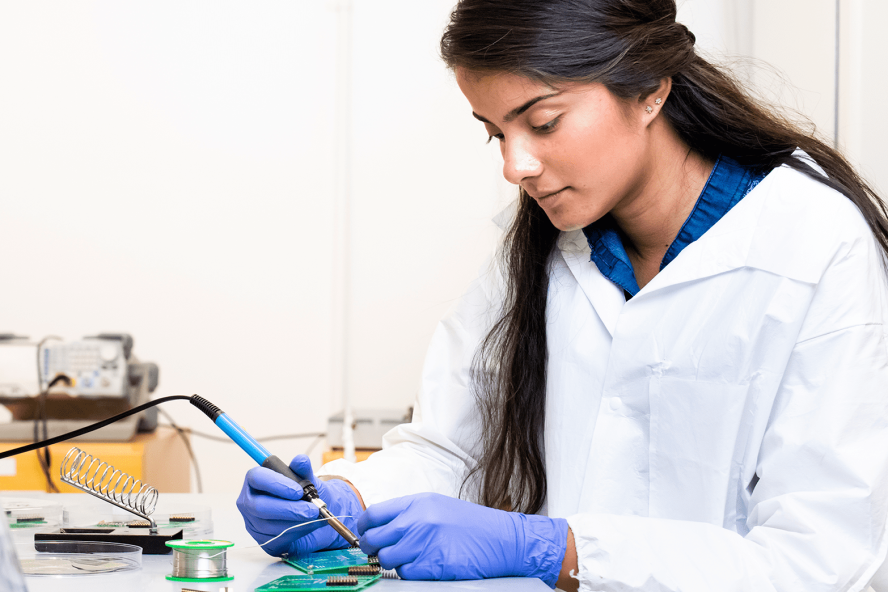Measuring the pulse

The Summer Scholars program provides rising juniors and seniors with the opportunity to conduct funded independent research projects as undergraduates. The seven engineering majors who received funding work with their faculty advisors and participate in programming organized by the Office of Scholar Development.
By Isaac Nicholas
When someone suffers a heart attack, their heart muscle is quickly starved of the oxygen it needs to function.
Akshita Rao, E21, is spending her summer in the lab mimicking those conditions by depriving cardiac cells of oxygen and measuring their reactions. Working as a team with Assistant Professor Brian Timko and doctoral candidate Olurotimi "Rotimi" Bolonduro, Rao has set out to investigate the electrophysiologic response of cardiac cells under hypoxic, or oxygen deprived, states. The research is important for understanding the fundamental changes that cardiac cells undergo in hypoxic conditions and the role that therapeutics can play in managing outcomes.
To capture meaningful data, Rao deposits cardiac cells directly onto electrodes situated within narrow passageways called microfluidic channels. Next, she flows fluid with a specified oxygen concentration through these channels. The cells within the channels react to the fluid and the electrodes convert the firing cells into electro-voltage data. This data is recorded by chips fabricated in-house by the lab and later studied by the team. The experimental design allows Rao to capture long-term recordings of the cells under conditions that mimic acute hypoxia. Rao and her labmates use the recordings to probe the electrophysiology of the cells in hypoxic states and to compare those data points to non-hypoxic cardiac cells.
Rao values the opportunity she has had to work with Timko and Bolonduro within the lab. “It definitely feels more hands on than working at an internship because I actually see the results from the cells, which is pretty cool,” she says. “I’m able to learn directly from graduate students and professors rather than just sitting in a classroom and learning from the textbook.”
Some of those learning experiences involve unexpected events that can only occur in lab work. Early in the summer, the team faced a contamination issue that resulted in a minor setback. “We had to work around that, but Rotimi did a great job of planning ahead of time and I learned a lot about contingency plans from him,” says Rao. Luckily, Bolonduro had kept a set of backup cells for this exact scenario.
Rao is most excited to share her work. She recently gave a presentation of her research to the Timko lab group and she is looking forward to demonstrating what she has been working on, and sharing everything she has learned from working in the lab, with her friends and peers.
Rao’s success in research stems from her willingness to investigate new ideas and the guidance that she has received from Timko and Bolonduro. The lab group is close and highly supportive of each other’s work. While publishing research in peer-reviewed journals as an undergraduate student isn’t always the norm for young engineers and scientists, the undergraduate and graduate students in the Timko lab work together to try to collect publishable data. Timko and Bolonduro consider themselves lucky to have so many talented students working alongside them at the cutting edge of bioelectronic systems.
Timko encourages undergraduate students to get involved in research at Tufts and offers a reminder: undergraduates have the opportunity right now to solve problems that can contribute to big-picture, life-changing research projects. Reflecting on the summer, he is especially proud of the collaborative nature of his group. “It’s just a good feeling to see students at different levels working together to solve a problem – it’s what makes research fun,” he says.
Department:
Biomedical Engineering